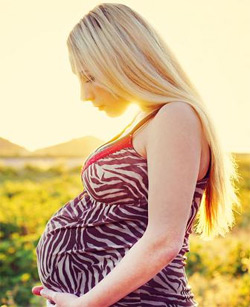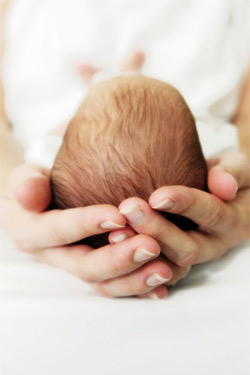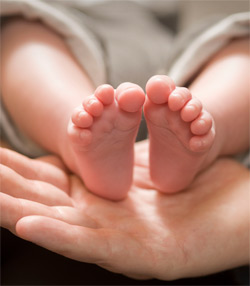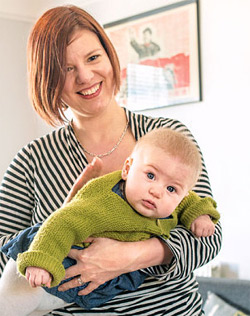|
|
Latest Researches in the field of IVF Treatment around the World
Peking University and Harvard University Research: IVF success rate 'could be
doubled'
 Mapping
the genetic code of fertilised eggs could double the success rate of IVF,
researchers claim. The new screening method to detect healthy embryos could
raise the success of IVF to 60% or more, according to a Peking University and
Harvard University team. Trials of the procedure in China offer hope to older
women, they say. Mapping
the genetic code of fertilised eggs could double the success rate of IVF,
researchers claim. The new screening method to detect healthy embryos could
raise the success of IVF to 60% or more, according to a Peking University and
Harvard University team. Trials of the procedure in China offer hope to older
women, they say.
The research, in the journal Cell, should be viewed with caution, said a UK
fertility expert. IVF involves joining a woman's egg and a man's sperm in a
laboratory dish, then transferring embryos into the mother's womb. If screening
eggs or screening embryos is not robust and reliable it could cost women their
eggs or their embryos, both of which are precious and finite Dr Yacoub Khalaf,
Assisted Conception Unit, Guy's Hospital.
In order to maximise the success of IVF, various screening procedures can be
used by fertility clinics to select the most healthy ones for implantation.
These approaches often involve removing cells from the growing embryo, and may
not pick up all genetic problems.
The new method, studied in 70 fertilised eggs from volunteer egg donors, was
based on removing left-over fragments of cells, known as polar bodies, from the
early developing embryo and analysing their full genetic code. Lead researcher,
Jie Qiao of Third Hospital, Peking University, said: "Theoretically, if this
works perfectly, we will be able to double the success rate of test tube baby
technology from 30% to 60% or even more."
Proof of principle
The technique allows DNA contributed by the mother to the growing embryo to be
screened for genetic abnormalities that might lead to IVF failure, miscarriage,
or genetic problems in the child, said co-researcher, Xiaoliang Sunney Xie, of
Harvard University. It would be of most use to women with repeated failures of
IVF and could improve the success rate of fertility treatment, particularly in
older women, he said. "In this paper we have a proof of principle - the clinical
trial has already started," he told BBC News. "It does offer hope to women with
repeated failure of IVF."
However, a UK expert urged caution. Commenting on the research, Dr Yacoub Khalaf,
consultant in reproductive medicine and surgery at the Assisted Conception Unit
at Guy's Hospital, London, told BBC News: "The area of screening is appealing in
theory but in practice has not delivered. "If screening eggs or screening
embryos is not robust and reliable it could cost women their eggs or their
embryos, both of which are precious and finite." Infertility affects up to 15%
of couples around the world, with many turning to IVF to have a child.
Scandinavian Research: Healthier IVF Babies Now
 Children
born from artificial fertilization have much better chance of survival and good
health due to better techniques and policies, said a Scandinavian study on
Wednesday. Children
born from artificial fertilization have much better chance of survival and good
health due to better techniques and policies, said a Scandinavian study on
Wednesday.
Doctors looked at data from 1988 to 2007 from Denmark, Finland, Norway and
Sweden for more than 92,000 children born through assisted reproduction
technology (ART), the term for in-vitro and other methods.
Of them, more than 62,000 were single births, also called singletons, and more
than 29,000 were twins. The health of the babies at birth and in their first
year of life was compared to that of children conceived without ART. "We
observed a remarkable decline in the risk of being born pre-term or very
preterm," said Anna-Karina Aaris Henningsen at the University of Copenhagen.
"The proportion of single ART babies born with a low or very low birth weight -
less than 2,500 grams (5.5 pounds) or 1,500g respectively - also decreased."
"The rates for stillbirths and death during the first year declined among both
singletons and twins, and fewer ART twins were stillborn or died during the
first year compared with spontaneously conceived twins," Henningsen said.
In the period 1988-1992, the rate of pre-term singletons born from ART was 13
percent, compared to five percent among babies that had been spontaneously
conceived.
But by 2007, this had fallen to eight percent in the ART group, while the
non-ART group stayed at five percent.
Henningsen said several factors contributed to the improvement. Laboratories
became more skilled at culturing fertilized eggs before returning them to the
uterus, and hormonal drugs to stimulate ovaries for egg harvesting were milder
than before.
The biggest gain, though, was in a policy change to encourage a single embryo
implant at a time, not several. Multiple embryos boost the chance of a live
birth, but also raise the odds of having twins or triplets, which can result in
lower birthweight and health complications. From 1989 to 2002, the proportion of
ART twins in the four Scandinavian countries was stable at about 23 percent of
births, but then began to decline. By 2007, it had halved to 11.6 percent.
The study appears in the Journal Human Reproduction.
University of California Research: Knocking Down A Single Gene can Fix
Stress-Induced Infertility
 Scientists
have discovered that by knocking down a single gene, they can fix stress-induced
infertility in rats. Although stress has been linked to decreased sex drive,
delayed pregnancy and an increase in miscarriages, this is the first time the
molecular basis for the links has been explored. Daniela Kaufer from the
University of California Berkeley said that remarkably, genetic silencing of a
single chemical compound, a peptide called RFRP3, restores mating and pregnancy
success to a rate indistinguishable from non-stress controls. Stressed females
were less motivated to mate, became pregnant less often and - in those that did
copulate successfully - fewer live pups made it to term and were instead
reabsorbed into the uterus. The findings show that the impact of stress lingers
long after the stress has been removed. These marked effects were completely
eliminated by knocking down RFRP3. Scientists
have discovered that by knocking down a single gene, they can fix stress-induced
infertility in rats. Although stress has been linked to decreased sex drive,
delayed pregnancy and an increase in miscarriages, this is the first time the
molecular basis for the links has been explored. Daniela Kaufer from the
University of California Berkeley said that remarkably, genetic silencing of a
single chemical compound, a peptide called RFRP3, restores mating and pregnancy
success to a rate indistinguishable from non-stress controls. Stressed females
were less motivated to mate, became pregnant less often and - in those that did
copulate successfully - fewer live pups made it to term and were instead
reabsorbed into the uterus. The findings show that the impact of stress lingers
long after the stress has been removed. These marked effects were completely
eliminated by knocking down RFRP3.
Lead author Anna Geraghty said that a strikingly high proportion of healthy
women struggle with fertility and our findings provide a new focus for the
clinical study of human reproductive health. RFRP3 is the mammalian equivalent
of a hormone first identified in Japanese quail and is made in the hypothalamus
portion of the brain. One way it exerts its effect on females is by decreasing
the normal surge in hormones that accompanies ovulation.
It may be directly regulated by the stress hormone corticosterone. However, even
after recovery from stress, when corticosterone levels have returned to normal,
RFRP3 was found to continue exerting its effect on reproduction.
The study is published in the open access journal eLife.
University of Cambridge Research: Infertile Couples may Have Kids from IVF from
Skin Cells
 A
new research has demonstrated that infertile couples who cannot produce their
own sex cells may finally be able to have children through IVF after scientists
achieved a key breakthrough in making sperm and eggs from skin cells.
Researchers have converted human skin cells in a laboratory into the "primordial
germ cells" normally found within the testes and ovaries, which develop into
mature sperm and eggs, the Independent reported. A
new research has demonstrated that infertile couples who cannot produce their
own sex cells may finally be able to have children through IVF after scientists
achieved a key breakthrough in making sperm and eggs from skin cells.
Researchers have converted human skin cells in a laboratory into the "primordial
germ cells" normally found within the testes and ovaries, which develop into
mature sperm and eggs, the Independent reported.
Professor Azim Surani of the University of Cambridge said that the development
could also lead to a better understanding of the "epigenetic" changes within
human cells that contribute to ageing and cancer because of the insights it will
give scientists about how adult human skin cells can be reprogrammed into sperm
and eggs.
Surani continued that this was the first step in demonstrating that they could
make primordial germ cells without putting them into patients to verify they
were genuine. The development could also lead to a better understanding of the
"epigenetic" changes within human cells that contribute to ageing and cancer and
the development could also lead to a better understanding of the "epigenetic"
changes within human cells that contribute to ageing and cancer.
CARE Fertility Group Research: 'Most exciting breakthrough in IVF treatment in
30 years' could triple number of births
 Thousands
of infertile couples could benefit from a new IVF procedure that can
dramatically improve the success rate of having a baby through artificial
reproduction. Scientists believe they can double or even triple the proportion
of healthy babies born as a result fertility treatment with a relatively simple
technique that takes a series of time-lapse photographs of the developing IVF
embryos. Thousands
of infertile couples could benefit from a new IVF procedure that can
dramatically improve the success rate of having a baby through artificial
reproduction. Scientists believe they can double or even triple the proportion
of healthy babies born as a result fertility treatment with a relatively simple
technique that takes a series of time-lapse photographs of the developing IVF
embryos.
On average only about 24 per cent of IVF embryos implanted into women in the UK
lead to live births but the researchers believe this could be increased to 78
per cent using the new technique for selecting the best embryos. �I believe it
is the most exciting breakthrough we've had in probably 30 years,� said
Professor Simon Fishel, managing director of the CARE Fertility Group, where the
technique was developed.
�Every IVF practice in the world is unintentionally and unwittingly putting back
into the womb unviable embryos that don't make babies,� Professor Fishel said.
�We hope to see a paradigm shift in terms of IVF. It's a game changer for
everybody to have such an uplift in live birth rates. This is the beginning of
something revelatory,� he said.
Each year, licensed clinics in Britain carry out about 60,000 IVF treatments but
most of them end in failure, causing immense emotional upset to couples, many of
whom have paid between �5,000 and �10,000 for each treatment cycle. The new
procedure, which costs �750, identifies the best embryos to be implanted into
the womb based on the time it has taken to develop between two key stages in the
early life-cycle of the embryo.
Thousands of time-lapse pictures are taken during the first few days of an IVF
embryo's life and these are used to identify the time between the first
appearance of the fluid-filled cavity, called the blastula, and the final moment
before the embryo �hatches� from its protective shell.
Scientists have discovered that when this period lasts longer than about six
hours, the IVF embryo is likely to be carrying an abnormal number of
chromosomes, called aneuploidy, which will lead to a failure of the pregnancy. A
preliminary study, published in the journal Reproductive Medicine Online and
based on a retrospective analysis of 88 IVF embryos of 69 couples, found that
the time-lapse technique could have improved the success rate of life births in
this particular group of patients from 39 per cent to 61 per cent.
Even better success rates can be expected once the procedure is refined and
applied to the wider population of infertile couples seeking IVF treatment,
Professor Fishel said.
�Our work has shown that we can easily classify embryos into low or high risk of
being chromosomally abnormal. This is important because in itself this is the
largest single cause of IVF failure and miscarriage,� he said.
�The beauty of this technology is that the information is provided by a
non-invasive process. So far we have seen a 56 per cent uplift compared to
conventional technology, giving
our patients the equivalent to a 78 per cent live-birth rate,� he added.
Normally, IVF embryos in an incubator are checked manually each day by
embryologists but the time-lapse cameras are able to do this automatically by
taking pictures every 10 minutes without interfering with embryo development,
said Alison Campbell, embryology director at Care Fertility in Nottingham, who
developed the computer algorithm controlling the analysis.
�With time-lapse we have the ability to view more than 5,000 images over the
same time period to observe and measure more closely each stage of division and
growth. As a result of continuous monitoring we have demonstrated that delays at
defined points indicate abnormal development,� Ms Campbell said. Martin Johnson,
a fertility expert and editor of the journal where the work is published, said
further �prospective� studies comparing the technique to existing methods of
embryo selection are still needed before the procedure is recommended as
standard treatment. �There are caveats with this research�.and for these reasons
we have to be cautious,� he said.
Sue Avery, director of Birmingham Women's Fertility Centre, said: �Unfortunately
the study does not compare this exciting new approach with standard practise in
embryology in which embryologists already look for the best embryos to place in
the womb. Until the new technique is compared to current practise we cannot know
whether different embryos are being chosen.�
Egg timing: Key stages
The developing embryo goes through two key stages when the fluid-filled cavity
or �blastula� first forms and when the blastula is fully formed before the
embryo �hatches�.
The time between the two is used to judge whether the embryo is viable, with no
defects in chromosome numbers. If the period is longer than six hours, the
embryo is at high risk of abnormal chromosomes, which will inevitably lead to
complications. Time-lapse photographs can indicate which embryos have a shorter
time-period between these two points, and so which embryos are best for
implantation into the womb.
Next
Dated 28 April 2015
|
|
|
|
|









